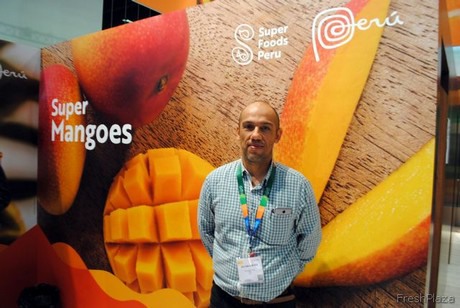In the last few years, there has been a progressive growth of the area cultivated with mango in the north of Peru. Production also increased and amounted to 350 thousand tons in the 2017-2018 season, 207,000 of which were destined for export. The forecasts for the next season are considered very positive for the cultivation of Kent, Edward, Ataulfo, Haden, and Keitt varieties.
Exports have also increased, as this season the country exported 207,000 tons (about 9,000 containers), i.e. 14% more than the 181,000 tons it dispatched in the previous season. Juan Carlos Rivera, the Manager of the Peruvian Association of Producers and Exporters of Mango (APEM), said that "this good performance was the result of the good flowering there was after the El Niño phenomenon. The production that isn't exported is for the domestic market and for industrial processes."

60% of the mango exported is fresh, 20% is frozen, 5% is pulp, and the remaining 5% is juice. Most of the fresh mango is destined for the European markets (68%), the United States (25%) and other markets in Latin America and Asia (7%).
"Peru currently is the third biggest exporter of mango in the world, after having surpassed Ecuador three years ago. Its main competitors are Mexico, which ranks number one, and Brazil," said Rivera.
The Kent variety is the best variety to export because it is a good traveler. That's why it is perfect for shipping to China, where no fruit has arrived in good conditions yet. The fruit is exported by air to maintain its quality, flavor, texture, and nutritional value.
A campaign with little competition
Mango has great acceptance worldwide due to its exquisite taste, attractive coloration, and exceptional nutritional properties, such as vitamins A and C. In addition, Peruvian producers have extensive experience in the cultivation and handling of mango for export. In addition, they are always implementing new technology to help them both in the fields and in the packaging plants. This allows the Peruvian mango to compete with other exporting countries.
This crop is very resistant to rains, so the last El Niño phenomenon was very beneficial for the plantations, as the soils were hydrated and filled with silt, which fortified the mango crops. The cold winter and lack of rains that followed contributed to a good flowering, which allowed the plantations to have an excellent development and a very good production.
Normally the campaign begins at the beginning of November and lasts until March. Production peaks in January and, therefore, there is a higher export volume, which favors the companies that are dedicated to the Peruvian mango. "That favors us considerably because we are alone in the international market in that month. When production starts to drop in Piura, it begins in Lambayeque and, later, in Casma," Rivera stated.
The varieties for export are grown in the valleys of San Lorenzo, Chira, Medio Piura, Alto Piura, Lambayeque, and Casma. In 2001, Peru had around 11,800 hectares of mango. Nowadays, the country has some 29,000 hectares. They also plan to increase the area devoted to this crop by 1,500 hectares over the next five years, in Lambayeque.
Visit APEM at the Asia Fruit Logistica: Hall5d / Q02
To learn more about Peru's excellent mango, visit the stand of the Peruvian Association of Producers and Exporters of Mango in Asia Fruit Logistica.
For more information:
Juan Carlos Rivera - Gerente
Peruvian Association of Producers and Exporters of Mango- APEM



